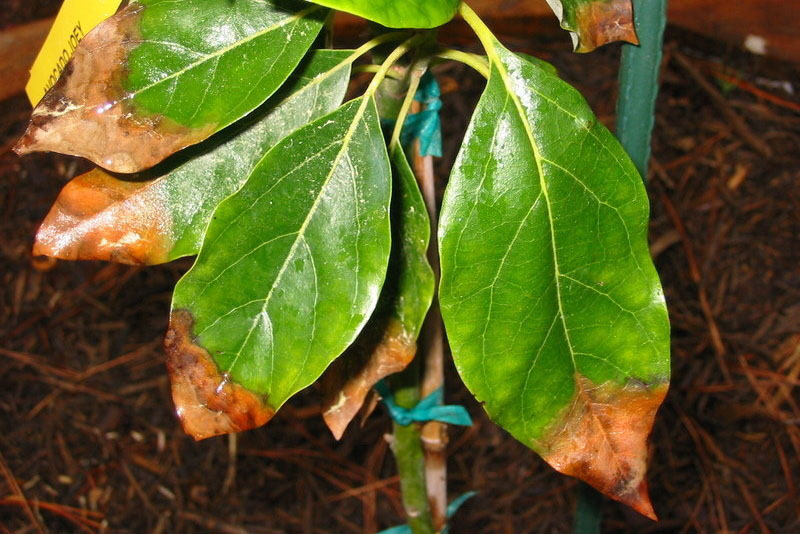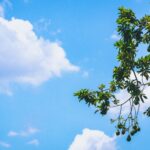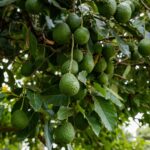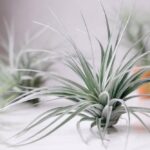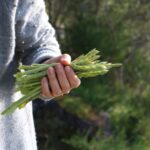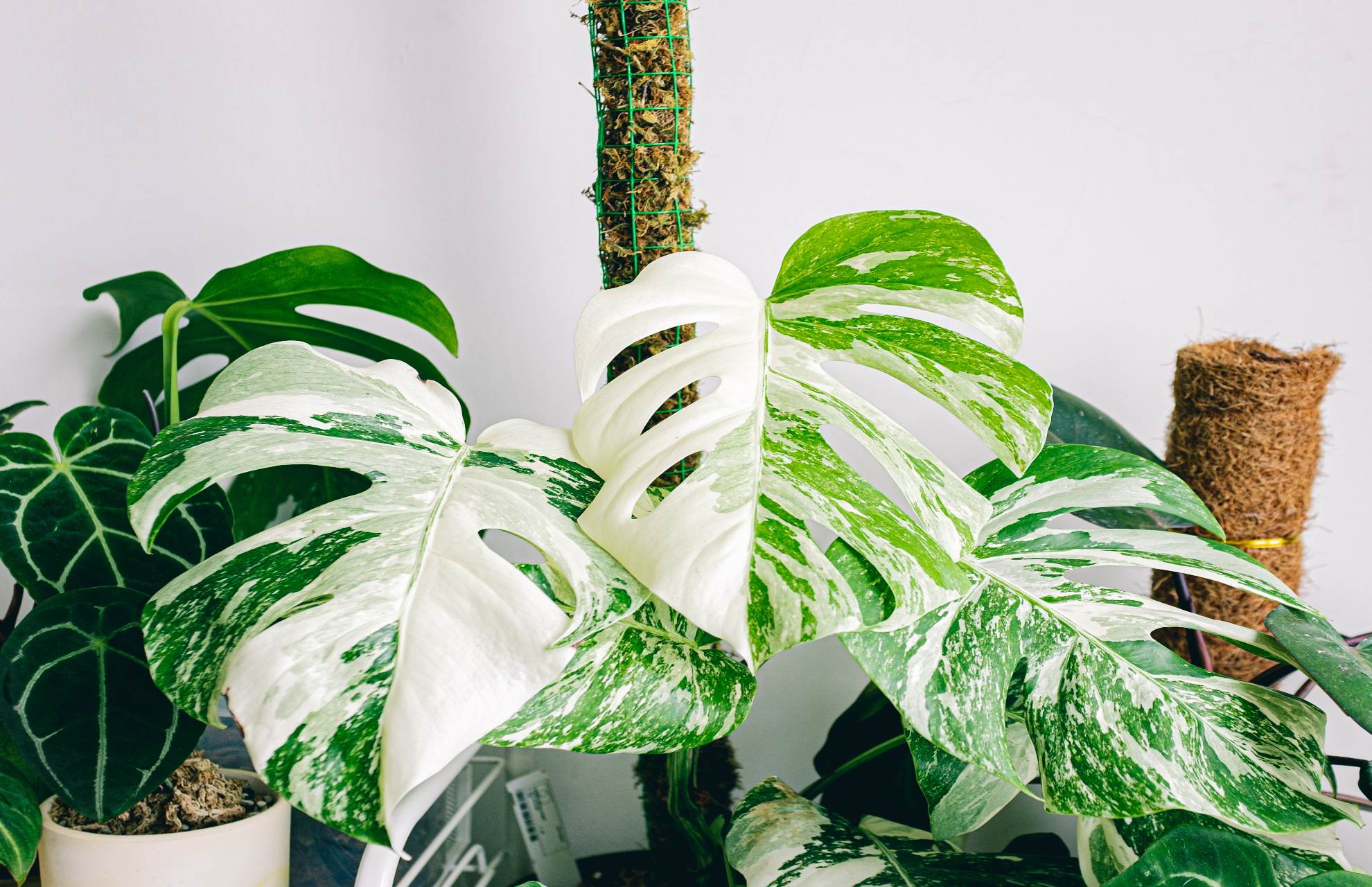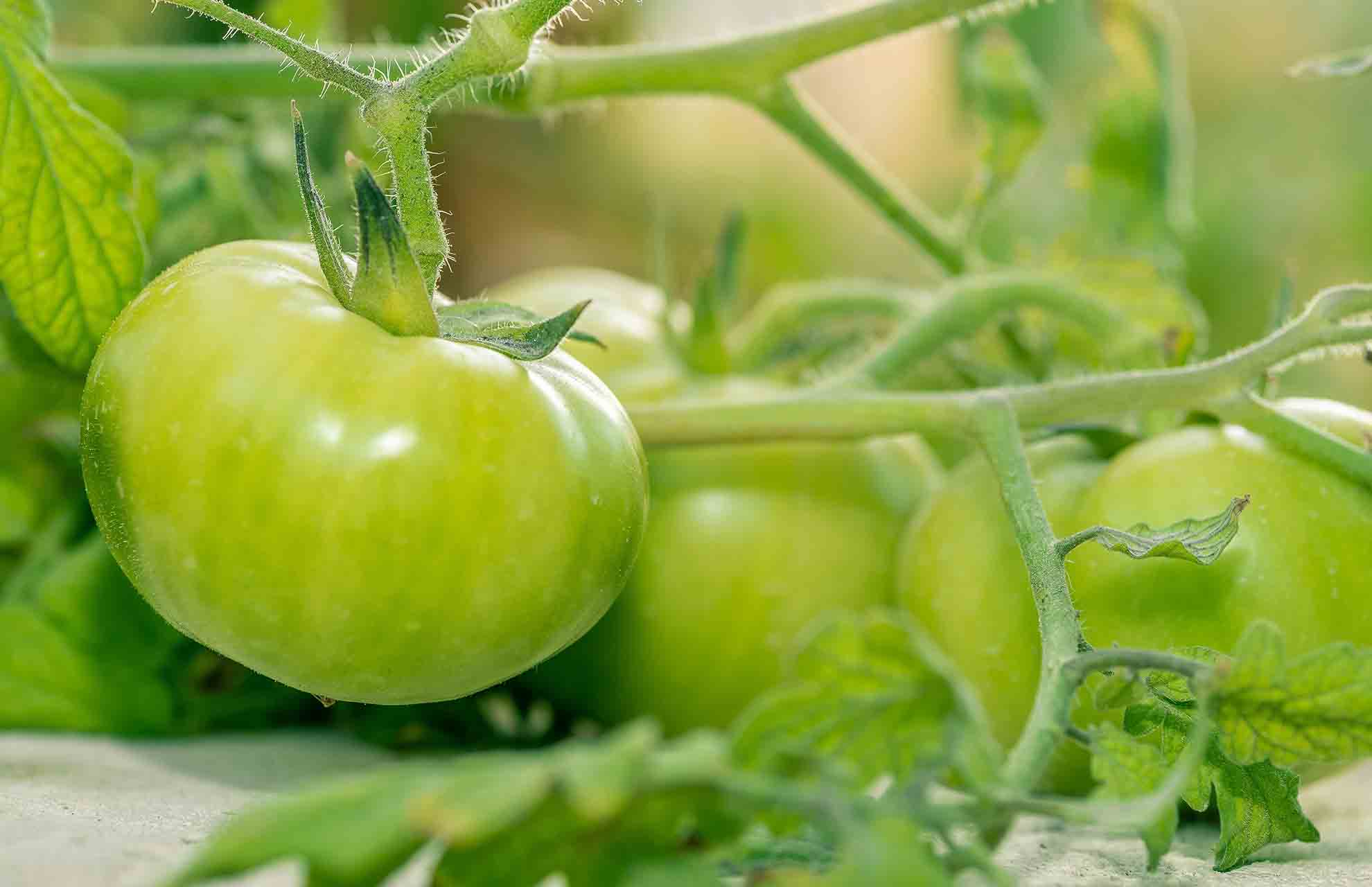Avocado leaves turning brown is never a good sight for any gardener because it can be a sign of underlying issues. In this comprehensive guide from our trusted avocado growers, you’ll learn what’s causing these brown spots on your plant’s leaves and how to get rid of them.
Why My Avocado Leaves Turning Brown?
Avocado leaves turn brown for one of four reasons. Tip burn is usually caused by specific characteristics of avocado tree biology. The most common causes of avocado leaf browning are listed below.
Accumulation Of Salt
Avocado leaves can turn brown due to the accumulation of chloride and sodium salts. This is unique to avocado trees in general; most other plants do not accumulate these minerals as readily, so they remain green or healthy even when exposed!
Avocado trees’ sensitivity may be due to their inherent inability (or lack of) outdoor exposure while growing upshoot during hot weather conditions, which causes them to become more susceptible than others over time if irrigation systems are not properly cared for…
Excessive fertilizer application is the most common cause of salt buildup. If you notice an orange tint in your soil, it may be time to stop using chemical fertilizers and return to organic methods such as manure or compost, which will help balance what’s been taken out by leaching with natural ingredients such as rocks, chips, sea shells, and dissolved minerals found within the earth itself!
The Rot Of The Avocado Roots
Tip burn is more likely if your trees are infected with the pathogen Phytophthora cinnamomi.
The pathogen causes its host plant’s leaves, such as oak or apple trees, to turn brown with an indication at their tips, which may eventually become withered and dry up completely due to this effect known as “tip wear.”
If your avocado tree has this problem, its growth will be limited, the canopy will appear sparse, and the fruit will be smaller in size. Avocado trees affected by this usually lack small roots or have black small roots.
Your avocado tree may eventually decline and die if it is infected with Phytophthora cinnamon. Plant your avocado tree in well-drained soil to avoid this pathogen. You should also use a fungicide to encourage the growth of your tree.
A Lack Of Iron
Alkaline soils are more prone to iron deficiency in avocado trees. Tip burn is a common symptom of insufficient iron on avocado trees. Yellowing between veins and leaf drops can be seen on occasion.
Poor soil drainage exacerbates iron deficiency. Soil deficiency can be addressed by improving soil drainage and applying a foliar spray.
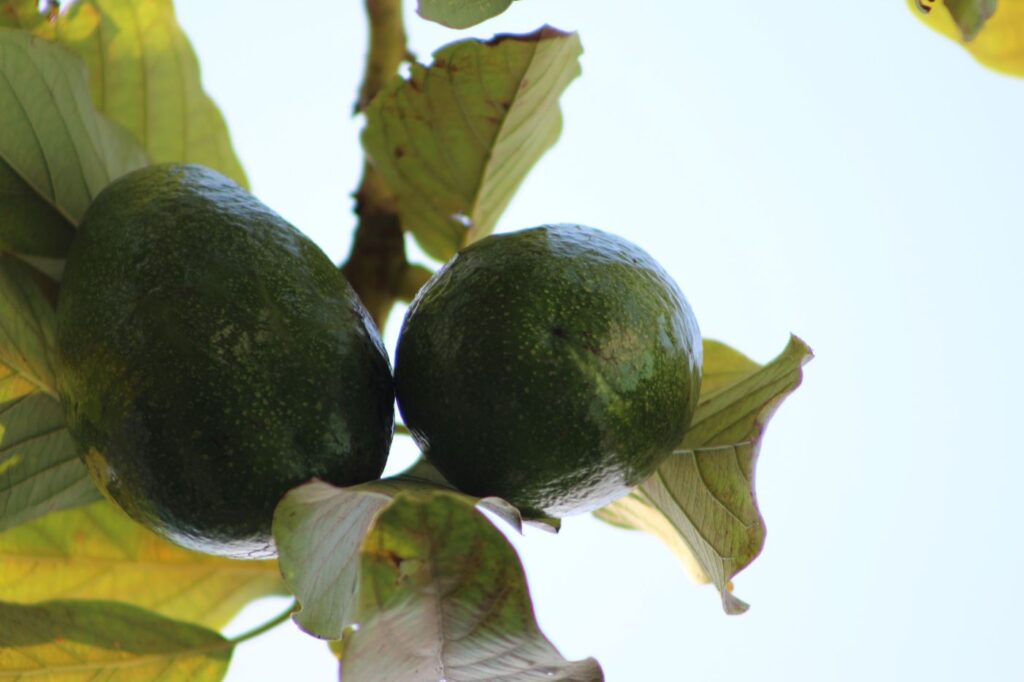
Anthracnose
Colletotrichum gloeosporioides is the fungus that causes avocado anthracnose. If you notice any changes in your avocado leaves, you may notice that they turn yellow before developing tip burn and turning brown.
This disease can cause shoot lesions, leaf drops, fruit lesions, and fruit decay. Fungal spores are typically spread by splashing water. This is why people prune the tree to improve circulation while also removing infected leaves, fruit, and twigs.
Pruning, on the other hand, should be done only in dry weather. Another option is to treat the tree with a copper compound, which prevents infection of the tree’s healthy tissue.
Not Enough Water
The USDA hardiness zones 8 to 11, which typically range from subtropical to tropical, are where avocado trees thrive. As a result, avocado trees typically spend a large portion of the year exposed to hot weather. They are unable to properly cool themselves because of the lack of water.
Plants breathe and exhale moisture when it’s hot, just like people do. This is known as transpiration in plants. The root moisture and transpiration can’t keep up and effectively cool the plant and its leaves when the climate is too hot and dry.
The leaves of the avocado tree consequently dry, curl, turn brown, and occasionally fall off.
Avocado trees are one of the major water consumers when compared to other fruit trees. For every pound of fruit produced, avocado trees need about 50 gallons of water.
Sun Scorch
Although sun scorch on avocado tree leaves isn’t a common problem, it can happen occasionally.
Sun scorch may be the cause of young avocado tree leaves turning brown if you’ve just planted one. When a young tree is planted in a sunny area, especially in the summer, it might experience some culture shock.
The tree will eventually get used to being in full sun. Until the tree takes root, you might want to offer some shade.
Sun scorch can also result from excessive heat (heat above 100 degrees), particularly if there are several days with temperatures above 100. Sun scorch problems can be avoided by keeping your tree well-watered.
Very Low Temperatures Or Frost
In response to a frost or a run of extremely cold temperatures, your avocado tree’s leaves may start to turn brown. If so, when the temperature rises, the tree will recover. It will take care of itself if you just leave it alone.
Nutrient Deficiency
Another potential reason why avocado tree leaves might turn brown is a nutrient deficiency. Your avocado tree may suffer from zinc, nitrogen, or iron deficiencies, which are the most typical.
Performing a soil test is the most straightforward way to identify a nutrient deficiency. You can order an at-home test from retailers like Amazon or Home Depot or order a soil test through your neighborhood extension office.
The best course of action is to add organic matter like compost or fertilizer (there are many options available, including natural and organic). You can determine what kind of fertilizer is required based on the results of the soil test.
Pests
The browning of avocado tree leaves is another issue that can be brought on by pests. Avocado trees’ leaves are eaten by pests like lace bugs and grasshoppers, which causes browning and other issues. The problem may be pests if the leaves of your avocado tree have holes in addition to brown spots.
Humidity Issues
If the air is very humid, your avocado tree might be absorbing water more quickly than it can transpire it. As a result, the plant develops edema, a water buildup that harms its cells.
You might notice brown spots, a crumbly texture, or swollen veins on your avocado tree leaves if it has edema.

Edema
Edema is a physiological deterioration that typically occurs in humid environments with a lot of warm soil water present.
In that kind of situation, the roots typically absorb water more quickly than the leaves can transpire, which causes an accumulation of extra water in your plant’s leaves.
Your plant’s epidermal cells will be forced to stretch and eventually collapse due to this water buildup.
Your plant’s leaves will have small brown spots, also known as edema spots, corky veins, and a crusty texture if it is experiencing edema.
How To Deal with Avocado Leaves Turning Brown?
The amount of tip burn on avocado leaves is the first thing that needs to be determined. A minor amount of tip burn on avocado leaves is not a big deal and is usually not cause for concern.
If less than 10% of the canopy is brown, there should be no problem or reduction in fruit yield. This indicates that your avocado tree is in good health. Avocado trees frequently suffer from tip burn. Avocado trees drop dead leaves and flowers during the flowering season.
This is why it is recommended to limit tip burn to 10%. Excessive tip burn and brown leaves may result in fewer flowers and insignificant fruit. The most common cause of tip burn is salt buildup, specifically chloride.
Watering is the solution to saving a tree from salt buildup. This is due to the fact that chloride moves with water. Avocado growers frequently use leach to solve this problem. Overwatering essentially transports the chloride that has accumulated in the soil, resulting in tip burn. You may be interested in Can You Eat An Avocado With Black Spots?, Are Avocados killing you?
Water Avocado Trees Properly
Under-watering avocado trees may cause the leaves to turn brown because there isn’t enough moisture for the roots to supply and cool the leaf edges.
If there is enough moisture in the first 4 inches of soil, the avocado roots can continue to stay cool and hydrated while also cooling and hydrating the rest of the plant. If the top 2-4 inches of soil around your avocado plant are completely dry, water won’t be able to reach the canopy of the tree.
If so, deep watering is the most effective technique when the leaves start to turn brown.
Every 2-4 weeks, deeply water your avocado plants to moisten the top 4 inches of soil. Root rot may begin if the soil remains moist for more than 24 hours.
You may need to deep water your plants more frequently if you live in a hot, dry climate to prevent the browning of the leaf edges from spreading. Mulching your soil with pine needles, leaves, or bark can help keep moisture in the potting soil if it is drying out too quickly.
Because most plants benefit from it, deep watering is preferable to shallow watering. After all, deep irrigation mimics rainfall.
Since avocado trees are tropical plants, they are better suited to long, heavy rainstorms than to frequent, light ones.
Watering your avocado tree insufficiently can have a number of unanticipated effects:
- It promotes shallow roots.
- Shallow roots that are drought-resistant cannot anchor your tree.
- Salt cannot be flushed away by shallow irrigation, so too much salt builds up.
Water the tree’s entire root zone when you water, not just the tree’s base; this will prevent the leaves on avocado plants from turning brown. Water to the drip line of the leaves, not just the tree’s base.
Preventing Sunburn In Avocados
Avocado trees are susceptible to sunburn from excessive exposure to the sun, which can brown the tips of their leaves or cause the entire leaf surface to increase as the leaves become drier.
It can be difficult to tell whether the sun is the cause of browning leaves, so check the tree’s watering before moving on to the sun, frost, salt, and chlorine in the water.
Check to see if the tree isn’t being scorched by the sun and if the leaves of the tree continue to turn brown in spite of the soil being kept moist with enough water. (Read Where To Plant Avocado Tree)
Like other tropical fruiting trees, avocados require complete illumination to grow well. The sun though can be harsh in tropical areas; thus, your leaves turn brown as they leaf dries (desiccation)
So it’s a good idea to keep an eye on your avocado tree during the hottest part of the day. Check the leaves and the top 2-4 inches of soil for overheating or dryness.
Make the following adjustments if you believe that the sun is drying out your avocado tree’s leaves and causing them to turn brown:
- To keep the soil moist and stop the roots from drying out in the sun, mulch the area around the avocado trees’ bases. 1-2 inches of leaves, bark, or pine needles might be used. Make the mulch at least three inches away from the stem or trunk of the avocado tree to stop the spread of mold or disease.
- Allow sunlight from the north to reach the avocado tree. While a southern exposure offers more light, it can also occasionally be too hot for the plant.
- Additionally, provide the tree with some midday shade since the afternoon is the hottest time of day. To provide shade in the afternoon to protect new leaves, you can use a large umbrella or strategically place it between larger trees, but it might be too late for damaged leaves because once they turn brown, they are all but dead.
Stop Frost-Harming Avocado Trees
Frost has the potential to kill and turn brown avocado leaves. Compared to other causes, the leaves of your avocado tree should be examined closely for signs of browning and curling to determine whether frost is to blame. Keep the temperature of your avocado trees above 25 degrees Fahrenheit.
While avocado trees can withstand a brief cold, if you experience a longer or more severe frost, cover any outdoor avocado trees with sheets or bring any potted avocado trees inside until the frost has passed. In hardiness zones eight and lower, avocado trees can be grown in a greenhouse.

Reduce Salt Build-up
The likelihood of salt and chlorine build-up is higher in avocado plants that are grown in pots because there is less soil available. As a result, small amounts of salt and chlorine can quickly become potent. As a result, Hass avocados are more impacted than Reed or other trees. Read: Simple Ways To Grow Avocado Trees In Pot
Avocado tree leaves can dry out and turn brown as a result of salt buildup in the soil, which will eventually cause the leaves to fall off. Salt from the soil and recent salt burn on leaves can be removed using deep watering, vinegar, reverse osmosis, or chemical additions.
When we water our plants, salts from the water (and fertilizer) build up in the soil, causing leaf burn.
After water evaporates from the soil and leaves, salt is left behind. The extra salt then dries out the avocado leaves, starting at the tips, and turns them brown.
While many plants are unaffected by excess salt, avocado trees are susceptible to leaf burn. The salt content of the water you use to irrigate your plants can, fortunately, be removed or reduced using a few different techniques.
Getting rid of Soil Salt:
- A deep watering
- Vinegar
- Reverse osmosis (RO) is a process that purifies water
- Chemical additions
The simplest and most effective method of removing salts from the soil and preventing leaf burn is deep watering. You’re using the extra water left over from deeply watering your avocado tree to dissolve the salt and spread it out to a depth of about 3 to 4 feet.
There are other methods for removing salt from the soil, including vinegar, reverse osmosis, and chemical additives. Reverse osmosis and chemical additions can be used to prevent leaf burn while deep watering and vinegar are very simple to use.
Chemical supplements can help you remove salts to stop avocado leaf burn.
- Gypsum
- Calcium chloride is a mineral composed of calcium and chlorine
- Sulfur
- Sulfuric acid (H2SO4)
- Iron Sulfate
- Aluminum Sulfate of aluminum
- Lime and sulfur
You can either buy a home testing kit that includes salt build-up or send samples to a testing lab if you think your soil has too much salt in it and you have a leaf burn. Testing reveals that a lack of iron caused by alkaline soils can cause your leaves to turn brown.
Finding The Balance For Optimum Growing Conditions
You might find some of the information confusing when you first start reading about how to take care of an avocado tree. You will learn that the tree requires sunlight and that full sun is ideal for growth, though it can also tolerate some afternoon shade. The secret to growing an avocado tree is balance. You can achieve that balance with the assistance of the following advice.
- When a tree is planted in a sunny area, it develops and produces the best flowers and fruit.
- The soil shouldn’t be too dry, but good drainage is crucial.
- Mulch can aid in moisture retention, but to stop disease, keep it about 12 inches away from the tree’s base.
Cold Weather
The leaves of avocado trees can turn brown due to harsh weather conditions like frost. The USDA hardiness zones 9 to 11 are ideal for growing avocado trees. If the tree sustains winter damage and its leaves and branches turn brown, wait until spring to prune any damaged branches. From what initially appears to be a brown and dead branch, new growth frequently emerges.
Conclusion
Now that you know the various ways your avocado leaf can turn brown, you can either prevent it from happening or deal with it appropriately. The following is a breakdown of the most important points to remember.
There are numerous reasons why your Avocado leaves may be turning brown.
- Putting your plant in direct, intense sunlight, such as the midday sun or a southern-facing window, will cause the leaves to turn brown and wilt.
- Always place the Avocado plant in indirect sunlight or in an eastern-facing window.
- Improper soil drainage, overwatering, and high humidity levels will increase the risk of algal and fungal infections in your plant.
- Remove all infected leaves and other parts of the plant if there are brown spots on the leaves caused by fungal infections.
- Apply a fungicide to your plant. In the case of severe fungal infections, you may need to repot the entire plant in fresh soil.
- When the soil retains too much moisture and the surrounding humidity is high, water may accumulate in your plant’s cells and cause the browning of its leaves. This is referred to as edema.
- Avocado plants should never be kept at temperatures below 25 degrees Fahrenheit.
- If brown discoloration or spots on your leaves is caused by a nutrient deficiency, adding them to the soil will solve the problem immediately.
There’s no need to be concerned if you notice your avocado plant’s leaves turning brown. Simply follow these tips and tricks to ensure that your plant lives a happy and healthy life!

